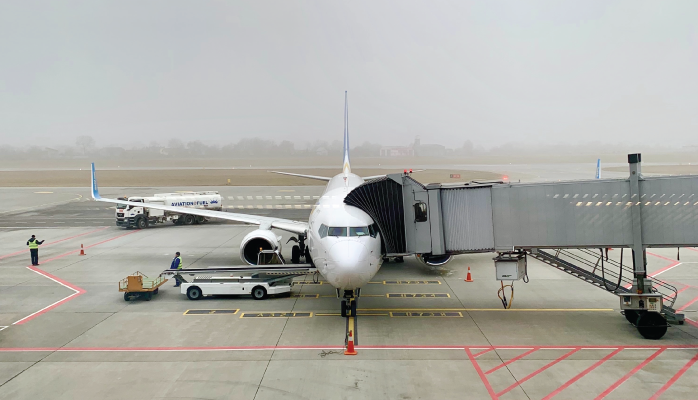Optimize Ability to Monitor, Manage, and Document

Becoming a better safety manager involves looking at how you are currently managing your SMS, and seeing where you can optimize your ability to:
- Manage risk exposure, such as reported safety issues, audits, reviewing control measures, etc.;
- Document your SMS design and actions taken to mitigate exposure;
- Promote the SMS; and
- Monitor safety performance;
Related Articles on Monitoring Safety Performance in Aviation SMS
- How to Monitor the Effectiveness of Control Measures
- 5 Useful Safety Performance Monitoring Tools in Aviation SMS
- How to Be Compliant With ICAO Safety Performance Monitoring and Measurement
Being a better safety manager involves:
- Being more efficient;
- Spending less time on rote tasks, and more time actually managing safety;
- Having a greater presence in your company;
- Inspiring better acceptance of the safety management system;
- Making more informed safety decisions;
- Analyzing safety concerns more thoroughly; and
- Getting more information out of your data.
Here are some simple ways to be a better aviation safety manager.
Understand Your Management Style
Being aware of your safety management style is a great way to improve your approach to managing your SMS. Socrates believed that humans do foolish things when they attempt to understand obscure and complex things before knowing themselves. Being aware of your safety management style allows you to tweak your management style to better fit the needs of your safety program.
The five safety management styles are:
- The expert safety manager;
- The respected safety manager;
- The top-down manager;
- The disciplinary manager; and
- The corporate safety manager.
These safety management styles each have certain pros and cons that will work better in some environments and worse in others. Take this safety management quiz to see what your style is:
Get Better Aviation Risk Management Tools
Sometimes, improving your ability as an aviation safety manager simply means gathering some new tools and resources that will better help you manage your SMS.
Here are some free resources for SMS mission-critical aspects of your safety program:
- Safety policy checklists;
- Safety policy templates;
- Safety audit checklists;
- Safety culture quiz (as you take the quiz, make a note of questions where you indicate your culture is struggling);
- SMS quality quiz (as you take the quiz, make a note of questions where you know your SMS performance/tools are lacking);
- Airline KPIs; and
- SMS Implementation plan checklist.
For a full list of free resources and free safety tools, follow the link.
Beyond free resources, aviation safety database software is another way to be a better safety manager because software:
- Amplifies the efforts of the safety team;
- Easily does the job of an assistant;
- Offers built-in processes and templates that act as natural guidance;
- Automates a very significant amount of manual work;
- Provides aviation industry tried and tested performance monitoring tools; and
- Provides a roadmap and templates for thorough SMS design; and
- Has a high value-to-cost ratio.
Aviation SMS database software significantly reduces risk to your SMS and your operating certificate by:
- Reducing audit findings and concerns;
- Assuring upper management the SMS is following well-defined standards;
- Offering transparency to ALL employees (upper management and line employees) into the SMS;
- Tracking key performance indicators with minimal effort;
- Engaging all employees in the SMS via enhanced safety promotion activities;
- Enforcing accountability for safety-related tasks;
- Permitting continuity in the SMS during safety-staff turnover; and
- Automating workflows to keep the SMS on track.
In short, low-cost, commercially available software is a sound investment. If you are using spreadsheets and paper to manage your aviation SMS, this is an accident waiting to happen. That is why EASA no longer allows spreadsheets to be the primary technology for storing hazard-reporting data.
Related Aviation SMS Database Articles
- What Is an Aviation Safety Database
- How to Choose the Best Aviation Safety Database Software
- See How Spreadsheet Not EASA Compliant Aviation Hazard Reporting Database
Focus More on Safety Promotion

Safety Promotion is an area of SMS that countless managers don’t pay as much attention to as they should. Many programs barely put any effort into promoting SMS. Beyond the obligatory safety poster, there is no further effort to promote safety. Alternatively, if there are some safety promotion activities happening at the company, there is no supporting documentation or documentation left on the laptop of the last safety manager who recently left the company. In this latter case, a web-based SMS database would have mitigated that risk.
Not producing safety promotion materials is a lost opportunity because Safety Promotion is one of the best ways, if not the best way, to improve safety performance. This is because there is an intimate link between safety promotion and safety culture.
Even if your safety culture is great now if you don’t continue to promote your safety program, you can count on a deterioration of safety performance within a couple of years. We see this pattern over and over.
Easy ways to promote the safety program are:
- Safety surveys;
- Safety posters;
- Safety newsletters;
- Fun safety quizzes in a newsletter; and
- Simply talking to staff and front-line employees.
Safety surveys are highly underused. Why waste an opportunity to toss out an occasional safety survey? When constructed properly, safety surveys can:
- Promote the SMS;
- Educate employees;
- Reduce friction to the aviation SMS; and
- Improve significantly improve hazard reporting cultures.
Related SMS Hazard Reporting Culture Articles
- Indicators of Good Hazard Reporting Culture
- How Aviation Safety Managers Can Improve Safety Reporting Cultures
- How to Develop Safety Reporting Cultures in Aviation SMS Programs
Have Clear Understanding/Definitions of Important SMS Concepts
Many safety professionals don’t have a clear definition of various SMS concepts. Misunderstanding safety concepts can lead to less-than-ideal safety analysis, and then to less-than-ideal safety decisions as well.
The following article is a great resource which covers many safety management definitions.
Improving Risk Management Skills
Safety managers who can speak the "SMS talk" appear more credible to both line employees and management. Consequently, these safety managers "earn" more power and are in a better position to positively influence outcomes. I'm not saying to fill your discussions with boring, technical terms, but take the time to break down and explain the logic behind your company's risk management processes.
Safety managers will not be able to effectively teach SMS concepts to employees and managers unless they are intimately familiar with the subject matter. Educate yourself! This will not be a wasted effort. Even if you believe your current management doesn't value your SMS expertise, you can use these skills and risk management knowledge at your next job.
Related Aviation Safety Manager Articles
- How Safety Managers Increase Their Power in Aviation SMS
- Career Advice for Aspiring Safety Managers
- What Makes a Good Aviation Safety Manager?
Who Congratulates the Safety Manager?
Being a safety manager is not all fun and glory. Young, mission-focused employees naturally look suspiciously at safety managers. They don't see the value of having a person simply walk around and appear to only "look at things." Upper-level management is also critical of safety managers in that the old-school managers don't see how safety managers contribute to the bottom line. Working in an environment where the safety manager's contributions are not valued adds stress to the safety manager.
Safety managers are conscientious, hard-working employees who want to sincerely make a difference in the organization. When they are not appreciated, the performance of the SMS will suffer and safety managers become apathetic toward safety. This turns into a self-fulfilling prophecy for the employees who believe the SMS adds no value.
Implementing an aviation SMS is a marathon, not a sprint. There are so many activities that safety managers perform that are not evident to other employees and management. In short, people cannot easily see the effects of your contributions.
Don't expect people to come up to you and say, "Good job, safety manager. You kept us safe today." What you can expect is criticism when audit findings hit the accountable executive's desk or when a preventable accident occurs. That is when most people notice the safety manager. Knowing this and expecting this normal behavior will make you a better safety manager. You will also experience less stress and hopefully become more effective.
Documentation Saves the Safety Manager

An SMS requires considerable documentation. This is a sad fact of life. Sorry. If it isn't documented, it didn't happen.
There are many documentation requirements in EACH of the four pillars and twelve elements of an ICAO-compliant SMS. They include:
- Document and records management;
- Safety policies and procedures;
- Safety goals and objectives;
- Accountabilities of key safety personnel;
- Reports from voluntary hazard reporting system;
- Incident reporting and investigation procedures;
- Hazard identification and risk assessment processes;
- Safety performance indicators;
- Safety training;
- Safety communications (meetings, newsletters);
- Continuous improvement;
- SMS auditing procedures and results;
- Management of change; and
- Emergency response planning.
This is a lot of work. If other employees realized the documentation workload faced by safety managers, they would look at safety managers in a different light. Documentation can be brutal, and documentation is perhaps the biggest challenge for safety managers.
Safety managers need appropriate tools to do their job. Spreadsheets are the wrong technology to manage all the documentation requirements listed above. An SMS database will be required. Short and simple.
Safety managers are only as good as the tools they use. If you don't use professional tools, there is little chance of survival for the SMS. The easiest way to become a better safety manager is to make sure you are using the proper tools for the job and that you are trained in how to maximize the utility of these SMS database tools. After all, you would not want to use a knife to cut down a 200-foot-tall tree.
If you don't have the proper tools, we can help. We have worked with hundreds of aviation service providers who have experienced the same pain as you. Don't wait. Become a better safety manager today.
Last updated March 2025.







